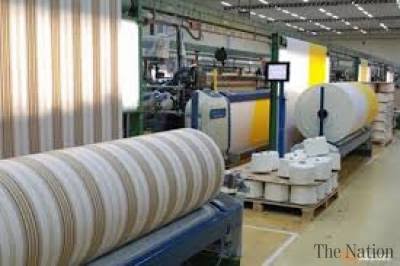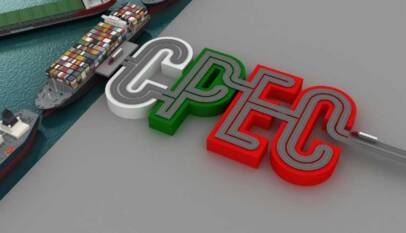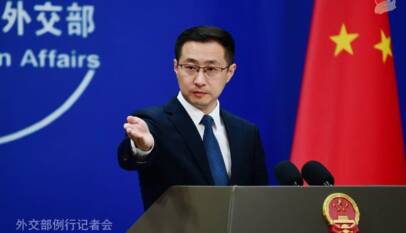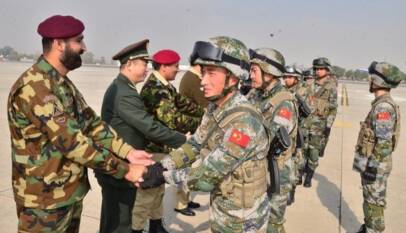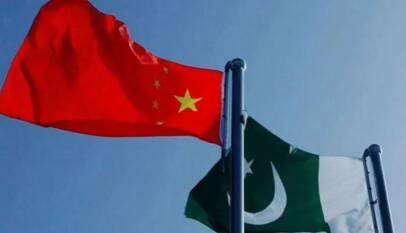$150m Chinese venture in Lahore to boost exports
Challenge Fashion Industrial Park, a Chinese venture worth $150 million in Lahore is expected to significantly boost exports by $54 million from the existing facility. In this way, the yearly exports next year will reach $120 million figure and $400 million in next few years. The venture will house state-of-the-art fabric units, dyeing facilities and garment manufacturing units for exporting sportswear from Pakistan to the Americas, Europe, Asia-Pacific and other regions of the world.
LAHORE: A Chinese company is investing $150 million in an industrial park on Lahore’s border with Kasur, which will house state-of-the-art fabric units, dyeing facilities and garment manufacturing units for exporting sportswear from Pakistan to the Americas, Europe, Asia-Pacific and other regions of the world.
The project by the Shanghai-based Challenge is probably the first foreign direct investment (FDI) in an export industry in Pakistan. The firm is already operating as Challenge Apparel since 2017 with its garment manufacturing unit on Multan Road near Lahore fetching nearly $44m in export revenue during the last fiscal year, according to its managing director Chen Yan, who is known in the government and business circles as Karen.
She expects exports from her existing facility to grow to $54m this fiscal year. Once the Challenge Fashion Industrial Park becomes functional from July next year, its sportswear exports from Pakistan are projected to grow to $120m in the first year and to $400m in the next few.
The largest Pakistani textile exporting company’s exports stood at less than $300m last year.
“Our total production is meant for export,” Chen told Dawn in an interview. “We’re bringing modern, most-efficient and environment-friendly technology to Pakistan from across the world besides introducing new ways of management at our new flagship industrial park. Our plan is to make Pakistan the hub for our polyester-based sportswear exports. Our Chinese operations in Shanghai and Hubei have customers like Adidas and Reebok who’re willing to come to Pakistan if we’ve capacity here. We’ll bring Pakistan new business. We’re a different breed and our product line is new for Pakistan.”
Currently, the company employs around 3,000 workers, including 28 Chinese nationals. Once the industrial park becomes fully functional, the company would have created nearly 10,000-11,000 new jobs.
Challenge’s exports from China stand at $150m. Its garments manufactured in China are sold at an average price of $20. Compared to that, its Lahore operation fetches an average unit price of $8-9, which is double the average unit price of around $4 fetched by Pakistani garment companies.
This difference in unit price isn’t about value-addition; this is all about the quality of the fabric. Fabric is the key to higher unit prices. You can charge customer whatever you want if you can give them high-end product,” Chen said. The Pakistani cotton-based garments attract lower unit prices because of poor quality of short-staple local cotton, she said. “Even a cotton product can sell for $100-200 if made from finer cloth produced from long staple fibre.”
Challenge entered the Pakistan market in 2014 when it invested $47m in a joint venture with Masood Textiles, a major exporter from Faisalabad. But the venture couldn’t last long as the company bled money profusely and the Chinese investor decided to relocate to Lahore as an independent company.
Chen said Weiguo Huang, chairman of the company, had evaluated Vietnam, Bangladesh, India and Myanmar for moving garment operations out of China. “Vietnam is too crowded already and moved into automobiles and electronics. There is no space for investment in Vietnam. Myanmar doesn’t have infrastructure. India is terrible. In Bangladesh you don’t have right conditions for setting up fabric units. So Pakistan is the ideal location for such garment manufacturing because of abundance of cheaper labour. The investment and tax policies for SEZs and new projects are also good. We’ve confidence to be at here.”
Red tape key hurdle to relocation
Answering a question why no other Chinese companies are relocating to Pakistan, she says Chinese textile industry is trying to relocate out of the country because of shortage of labour and rising wages and many firms want to come to Pakistan. But they don’t find a place to set up shop here. When you buy land you don’t get electricity or gas and other utilities.
“Chinese want to shift their business to a place where they can set up their operations in 3-6 months. You know when you go overseas to invest even in Africa they have industrial parks ready. You just go there and enjoy the ‘plug-and-play’ facility. No firm wants to waste two years in acquiring land and another couple of years in securing utilities to start operations. By the time you get utilities the opportunity is gone and you are already out of business. This is the biggest problem in Pakistan.”
Chen also spoke in detail about the bureaucratic difficulties her company has faced in acquiring land for the industrial park. “The bureaucracy uses different tactics to discourage foreign investors to extort money from them. The bureaucrats are working at cross-purposes with the government. There is no use of a good policy unless it is executed in letter and spirit.”
CPEC’s Success Story: $25 Billion Invested Across 38 Completed Projects
ISLAMABAD: A total of 38 projects worth over $25 billion have been completed and 23 develo…



